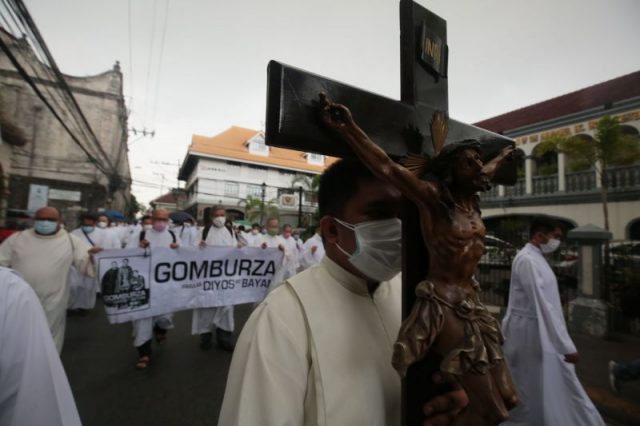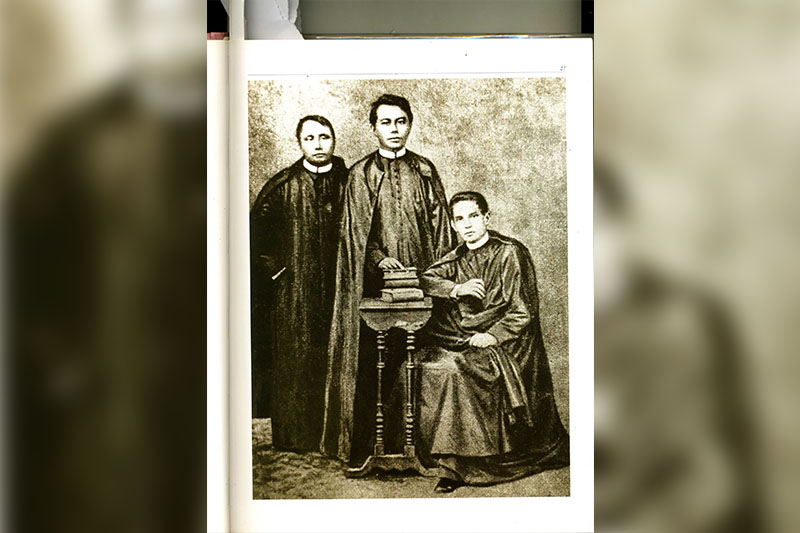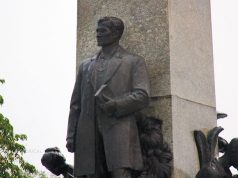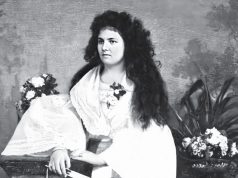
A government agency is inviting Filipinos to virtually commemorate the 150th death anniversary of Fathers Mariano Gomes, Jose Burgos and Jacinto Zamora, popularly known as Gomburza, whose martyrdom led to the first stirrings of the Philippine Revolution.
The National Historical Commission of the Philippines (NHCP) on Tuesday shared that the public can place a profile picture frame on their display photos to remind their families and friends of a significant event in Philippine history.
“Ang seskisentenaryong ito ay pagkakataon upang makiisa sa mahabang kasaysayan ng pagluluksa mula sa panahon nina Rizal, Bonifacio at Mabini hanggang sa kasalukuyan,” it said on Facebook.
“Ang tema nating ‘Pamana ng Paglilingkod at Pag-aalay’ ay nagpapaalaala sa atin na ang tatlong pari ay namuhay na naglilingkod sa kanilang mga pamayanan at ang kanilang pag-aalay ng buhay, bagaman resulta ng kawalang katarungan, ay nagkatulong sa laban para sa kalayaan sa ating bansa,” NHCP added.
It added a website link where Filipinos can get the profile picture frame featuring the three priests collectively known as Gomburza.
GomBurZa refers to the combination of the surnames of three Filipino secular priests, Mariano Gomes de los Angeles (Gom), Jose Apolonio Burgos (Bur) and Jacinto Zamora (Za).
Burgos was a 35-year-old priest from the Manila Cathedral while Zamora was a 37-year-old parish priest from Marikina.
Gomes, on the other hand, was a 72-year-old priest from Bacoor.
The three of them were accused, tried and sentenced to death through garrote by the Spanish authorities on Feb. 17, 1872 for supposedly instigating the mutiny in Cavite despite doubtful evidence.
The Cavite Mutiny, which happened on Jan. 20, 1872, was an uprising of Filipino soldiers and laborers who revolted against the Spaniards for voiding their exemption from the payment of tributes.
The incident prompted massive arrests against those who openly campaigned and supported liberal ideas, even those who were not connected with the mutiny.
These included the Gomburza, who have long voiced out unequal treatment towards secular Filipino clergy in favor of the Spanish friars.

They were executed on the early morning of February 17 at Bagumbayan, now known as Rizal Park.
The Archbishop of Manila, who believed in their innocence, ordered every church to toll their bells on the moment of their execution.
The incident contributed to Filipinos’ nationalist awakening and a desire to be liberated from the colonial oppressors.
When national hero Jose Rizal wrote what would become his last novel, “El Filibusterismo,” he penned a dedication for the three priests. It reads:
“The Government, by enshrouding your trial in mystery and pardoning your co-accused, has suggested that some mistake was committed when your fate was decided; and the whole of the Philippines, in paying homage to your memory and calling you martyrs, totally rejects your guilt. The Church, by refusing to degrade you, has put in doubt the crime charged against you.”
Other revolutionary figures such as Andres Bonifacio, Marcelo del Pilar and Apolinario Mabini, also commemorated the priests’ martyrdom through their writings and speeches.









